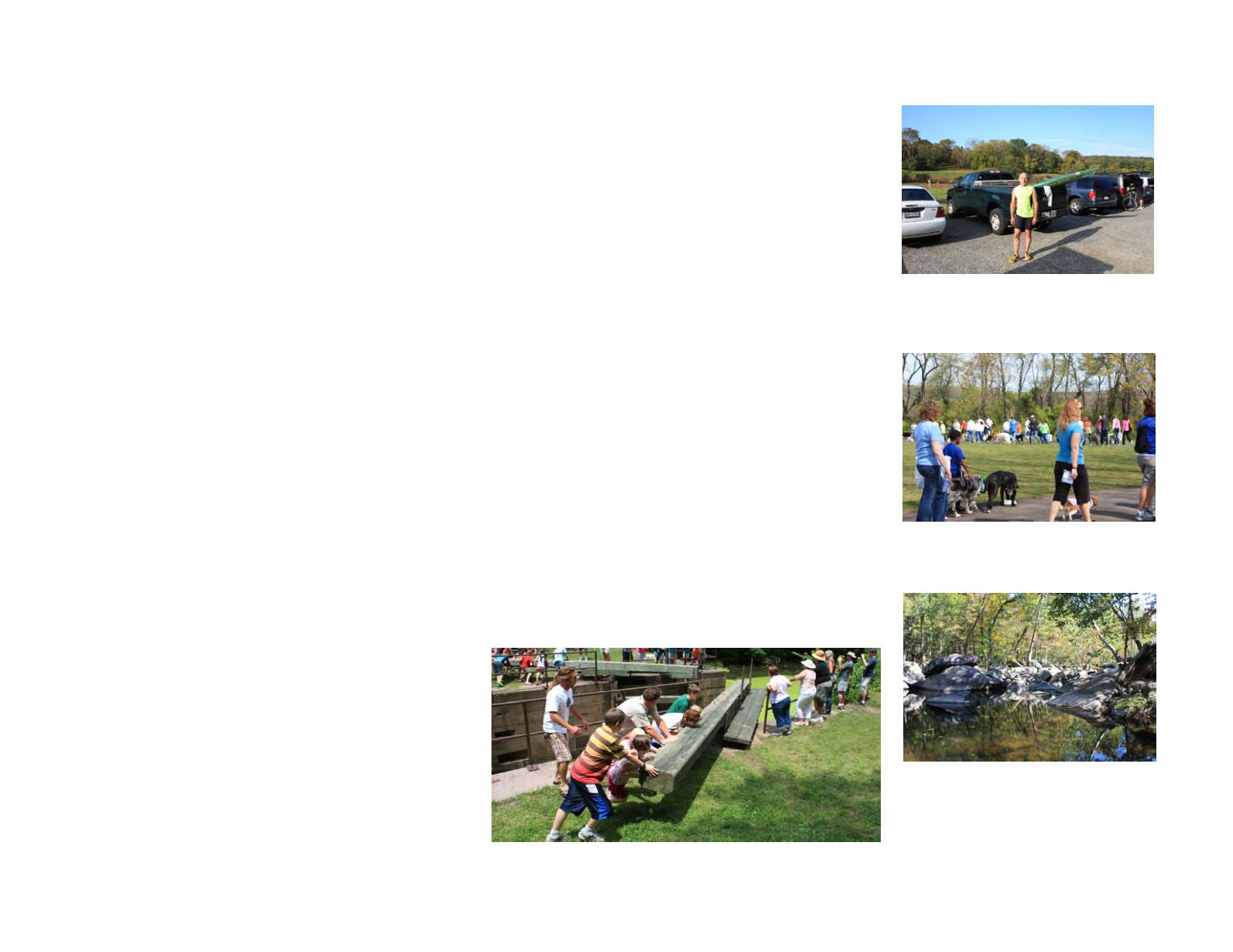
74
THE COUNTY’S OPEN SPACE AND RECREATION NETWORK
Enjoying the Benefits
The 2010 regional “Economic Value of Protected Open
Space Study” by the Delaware Valley Regional Planning
Commission (DVRPC) and GreenSpace Alliance shows that
preserving open space is a wise public investment. It
documented that preserved land provided the following
benefits to Montgomery County:
•
Increase of $10,000 to average value of each property,
•
About $117.5 million in yearly value of recreation
activities, and
•
About $269 million in yearly value of avoided health
costs.
Generally open space and park land can:
•
Sustain natural systems and protect wildlife habitat,
•
Provide numerous, affordable recreational opportunities
for all ages and interests,
•
Preserve cultural and heritage landscapes,
•
Promote community engagement,
•
Protect water resources and reduce the impact of floods,
•
Enable a fitter more active population,
•
Enhance the community image,
•
Provide tourist and visitor opportunities, and
•
Contribute to the overall attractiveness of the county for
business and commerce.
Green Lane Park provides great opportunities
for health and fitness.
Canal Day at Lock 60 sponsored by the Schuylkill Canal Association.
Parks bring people together for important
community activities.
Preserved land along the Unami Creek helps to
protect its water quality.
Major conservation organizations protecting land in the
county include:
•
Heritage Conservancy
•
Lower Merion Conservancy
•
Natural Lands Trust
•
Pennypack Ecological Restoration Trust
•
Wissahickon Valley Lands Trust
Other Private Open Space
Other types of open space and recreation land in the county
are owned by homeowners associations and community
organizations. Many of these properties were created as part
of large cluster developments or condominium projects and
include a variety of open landscapes. Currently 8,778 acres
of property are classified as common open land, and are
generally owned by homeowner associations. Some of these
properties may have deed restrictions placed on them,
though most are generally protected based on the land use
approvals made when they were created. Management of
these properties is often performed by homeowners associa-
tions and generally the use of the land is limited to members
of the homeowners association.


